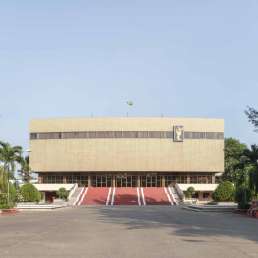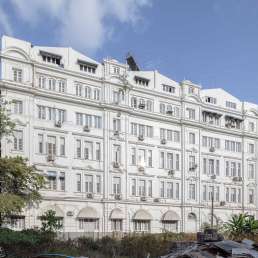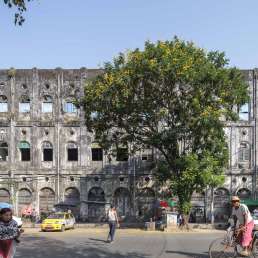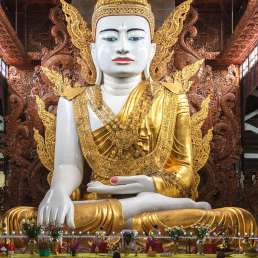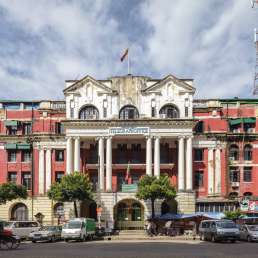Address: Between Lanthit Jetty and Kaing Dan No. 1 Jetty
Year built: 2014
Architect: Dominic Leong
Shortly before this book went into print, and only over a year after its opening, the authorities denied the trendy art gallery and retail space Transit Shed No. 1 (TS1) a lease renewal. We nonetheless decided to keep the project in our pages. The space was an interesting example of adaptive reuse architecture and showed the potential of Yangon’s riverside development. The space also gave an interesting insight into the role of art in today’s Myanmar. And who knows, maybe the gallery can reopen here or elsewhere someday?
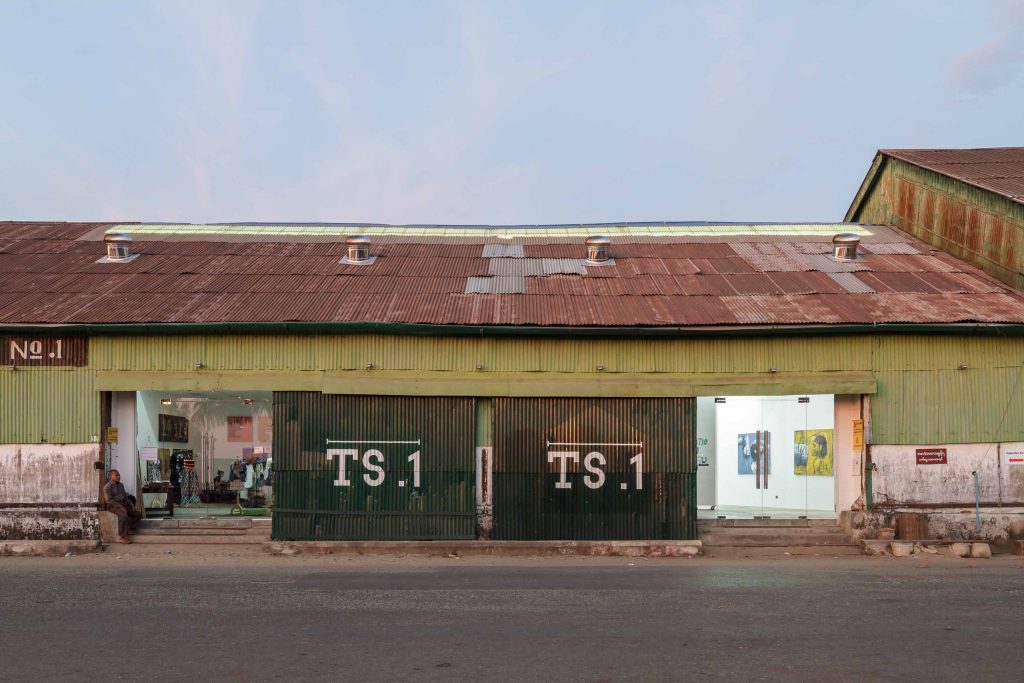
From the outside, TS1 was an unassuming converted old warehouse. Two doors to the right (on a corner plot) stood Port Autonomy, the complex’s bar and restaurant. Although beautifully renovated inside, both buildings’ corrugated iron exteriors were left largely untouched, and fit seamlessly into the industrial texture of the surroundings. Dominic Leong of Leong and Leong, a New York City-based studio, designed the two spaces. Inside the walls of TS1, he built a modern gallery defined by a diagonal wall, creating two symmetrical spaces. Structural changes included new walls and a light well, flooding the space with natural light during the day. The buildings would not look out of place in New York’s Brooklyn, East London or Berlin. Predictably, they attracted a hip and international crowd to this part of the city since their opening in early 2014.
The man behind the gallery and the bar, Ivan Pun, intended this project to be “a demonstration of the possibilities for downtown Yangon’s rejuvenation”. It would be a place for both art and high-end retail. The latter featured upmarket designer wares, crafts from local creators Myanmar Made and homeware from Hong Kong-based Lala Curio.
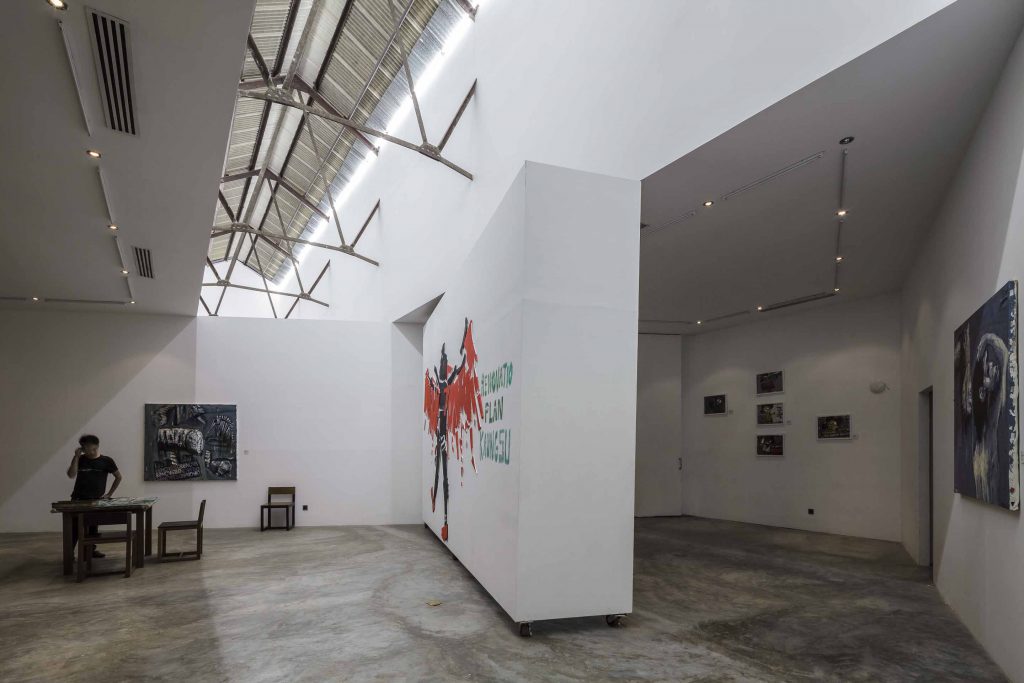
Myanmar’s political opening makes these interesting times for an art gallery, says Nathalie Johnston, who was TS1’s curator: “The artists have always been brave in their ability to express themselves despite challenges, and now more than ever they can use their words and their materials to show they’ve not only survived, they’re thriving.” With a group of affluent art buyers in the region, Myanmar art is now getting noticed and purchased across borders. Besides acting as a bridge between international buyers and the local art scene, Johnston thinks events aimed at local audiences had been an important part of TS1’s activities. Among them were “Attention, Please!”, a night of 10 female performance artists and “I’m Proud”, an LGBT exhibition featuring street art and works from local and international artists, as well as an experimental music concert.
Perhaps TS1 could slowly have become an important venue to showcase art that conveys social and political critiques. Johnston said at the time that local artists were allowed to address contentious issues in the space, but often set the limits themselves. “There are still certain things artists won’t touch without the cloak of reverence—like religion and nudity.”
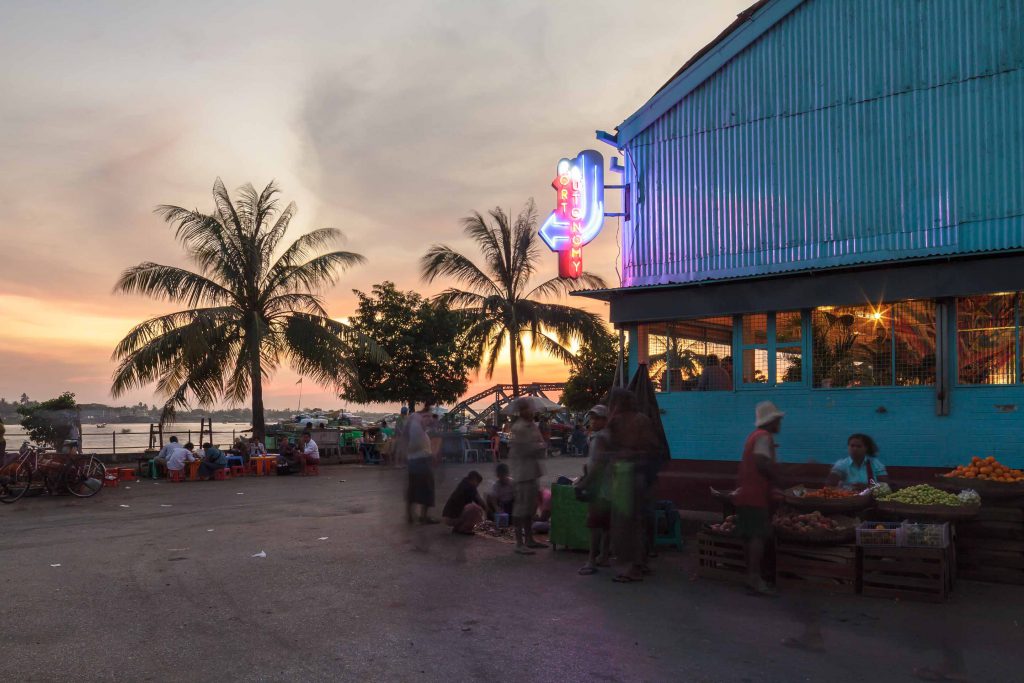
And yet, TS1’s conflation of art gallery and retail space was questionable. Its ties to the Burmese super-rich (in this case, Serge Pun’s business empire) could have limited the space’s critical scope—at a time when art should instead test and explore such issues.
These reflections aside, TS1 (and the Port Autonomy bar) were valuable additions to Yangon’s cityscape, not least for their interesting adaptive reuse architecture. The changing exhibitions taking place here also made this a cultural hub for residents and frequent visitors to the city. The vacant space’s fate is as yet unknown.
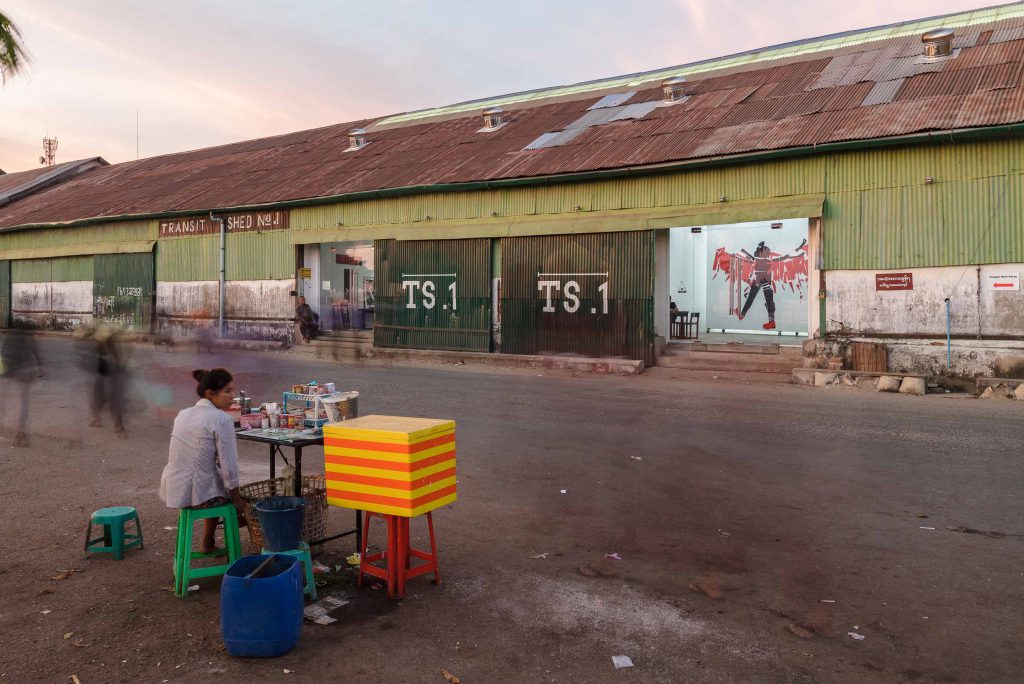
If the TS1 project can claim an abiding legacy, it is to have illustrated the potential for opening Yangon’s riverside to the public. The nearby jetties make this a busy stretch of waterfront, with commuters using the ferry service to Dala, on the opposite side of the Yangon River. Small cargo boats are unloaded here, their wares filling the nearby storehouses. Tea vendors and other hawkers line the street which is dominated by pedestrian traffic. This is a working port. When asked by filmmakers, locals commented favourably on the presence of an art gallery in the neighbourhood, but also said that they wouldn’t have time to go in and browse during the day. Johnston says: “When we had concerts or openings in the evenings, they’ve shown support by joining us and taking a look around.”
